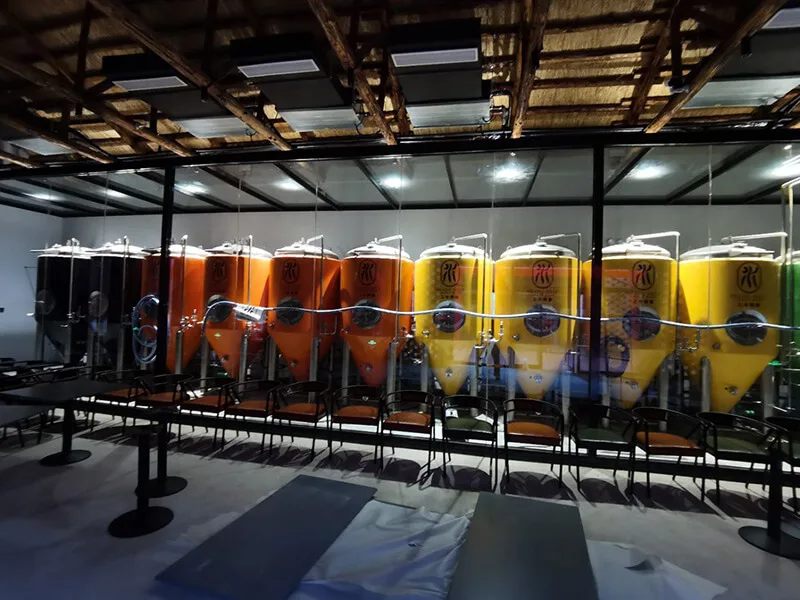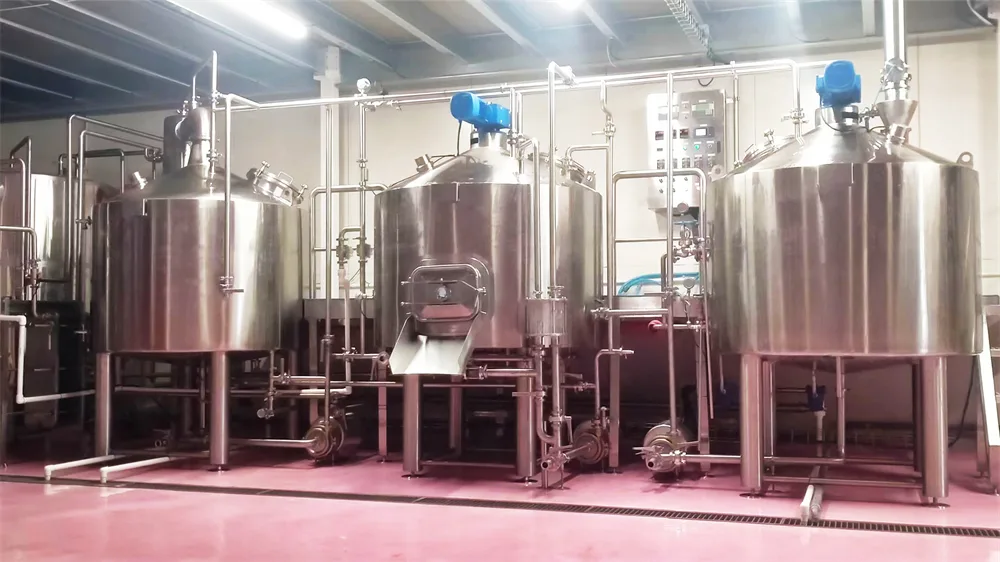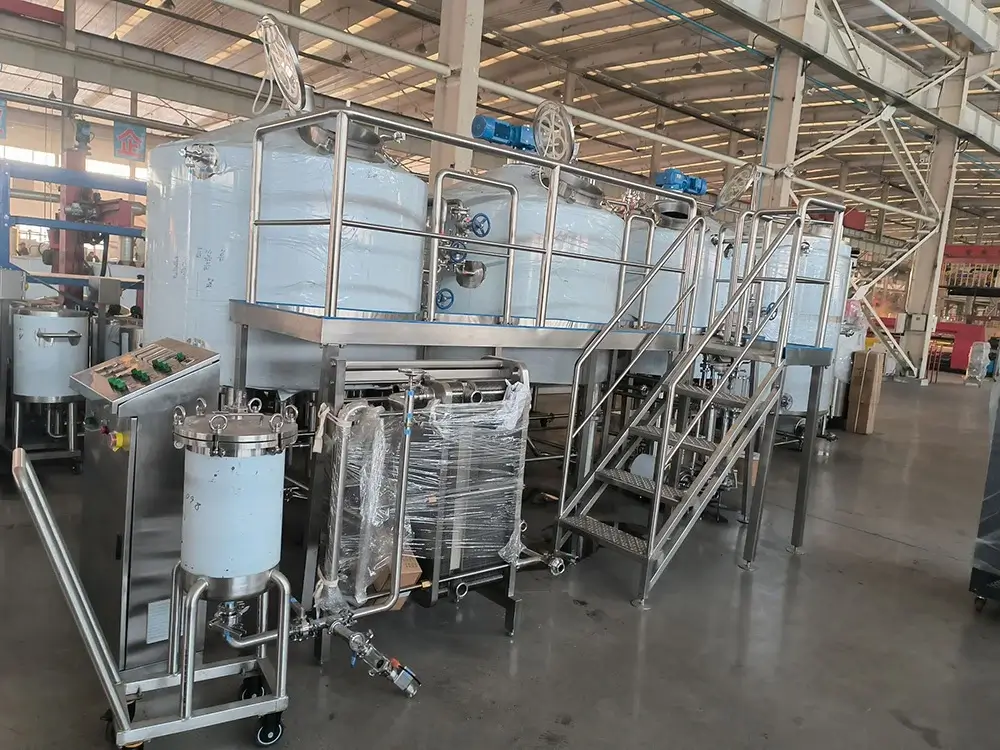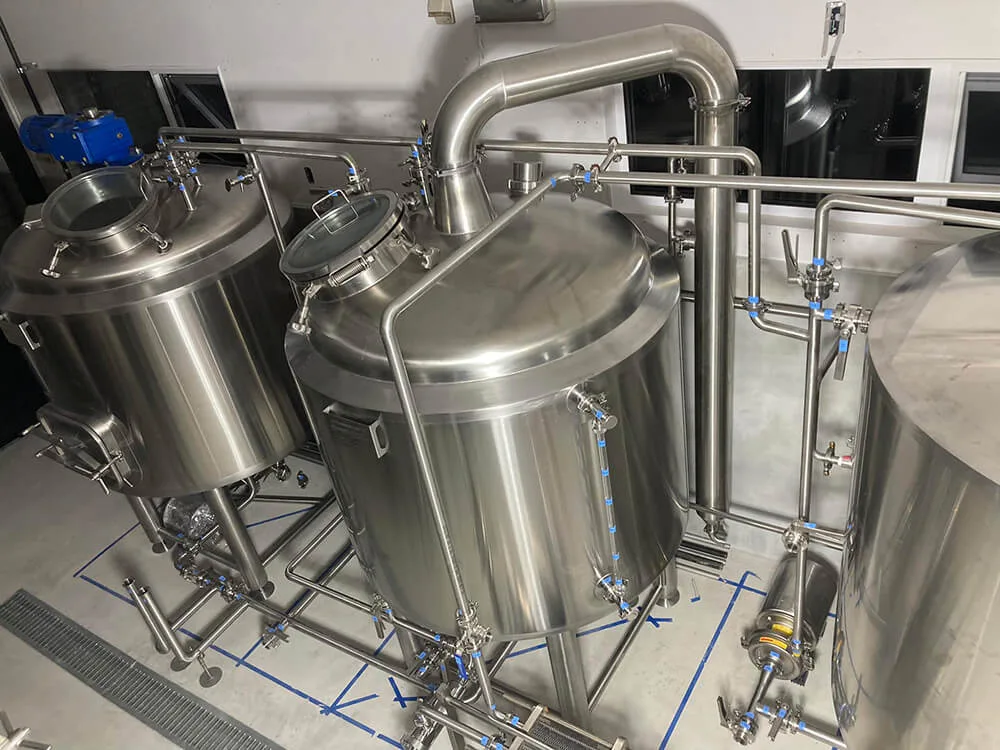When setting up a 1000L brewhouse system, one of the most important equipment decisions is determining how many fermentation tanks you need and what capacities to choose. This article explores how to design an efficient fermentation setup tailored for brewpubs or small-scale breweries.
Why Fermentation Tank Configuration Matters
Fermentation tanks are the bridge between your brewhouse and your packaging line. The number and size of tanks directly affect production efficiency, beer quality, and flexibility.
If the fermentation setup is not well-balanced with the brewhouse capacity, you may face:
- Idle time when wort cannot be transferred immediately after brewing.
- Higher cleaning costs and contamination risks if multiple beer types share the same tank.
- Production bottlenecks when demand increases.
- Inefficient use of space or cooling capacity.
Therefore, designing the right fermentation system for a 1000L brewhouse requires balancing capacity, cycle time, beer styles, and expansion potential.

Estimating the Number of Fermentation Tanks
Let’s take a 1000L brewhouse as an example. Each batch produces around 1000 liters of wort to be fermented into beer. The ideal number of fermentation tanks depends on:
- Fermentation Time:
- Ale: about 1–2 weeks per batch.
- Lager or long-aged beers: 3–6 weeks or more.
- Brewing Frequency: how many batches you brew per week (once, twice, or more).
- Variety of Beer Styles: more recipes = more tanks needed simultaneously.
- Future Expansion: extra tanks help scale production later.
According to brewing experience and industry guidance , the total fermentation capacity should be around 3–4 times the brewhouse volume.
That means:
- For a 1000L brewhouse, plan for 3000–4000L total fermentation capacity, equivalent to three to four 1000L tanks.
Example:
If you brew once per week and your beer ferments for two weeks (typical ale), you need two tanks (1 batch in fermentation, 1 waiting to be transferred).
If you brew twice per week, you’ll need at least four tanks to maintain rotation.
If you brew lagers with a 4–6 week fermentation cycle, you may need up to 6–8 tanks depending on your production schedule.
Recommended Setup for Brewpubs and Small Breweries
For most small-scale operations, the following setup is efficient and flexible:
- Tank Size: Match tank capacity with your brewhouse (1000L).
- Number of Tanks: Start with 4 × 1000L fermentation tanks, allowing continuous 2-week fermentation cycles for ales.
- Reserve Capacity: Add one or two extra tanks later for seasonal or specialty beers.
- For Lagers: Dedicate at least one or two tanks for longer fermentation (4–6 weeks).
- Cooling Jacket: Always choose jacketed, glycol-cooled tanks to maintain precise temperature control.
- Space Planning: Leave floor space for at least 20–30% expansion to add future tanks.

Operational Tips for Efficient Fermentation Tank Use
- CIP and Cleaning: Clean tanks immediately after transferring beer to reduce downtime.
- Batch Scheduling: Plan staggered brews — for example, brewing twice per week with tanks A, B, C, and D cycling in rotation.
- Product Diversity: Assign different beers to different tanks to avoid cross-contamination.
- Monitoring: Track temperature, pressure, and gravity daily to optimize fermentation time.
- Expansion Strategy: As sales grow, add tanks or increase batch frequency before upgrading brewhouse capacity.
Common Mistakes to Avoid
- Relying on one large tank instead of multiple small ones: Multiple 1000L tanks allow better flexibility for different beer styles.
- Ignoring long fermentation beers: Lagers or specialty beers require longer tank residence time, reducing turnover.
- Underestimating cleaning downtime: Always account for the time needed for CIP and sanitation.
- Neglecting infrastructure costs: Tanks require cooling, glycol piping, CO₂ management, and floor space — plan for the total system, not just the vessels.
Conclusion
For a 1000L brewhouse system, a practical fermentation setup for a brewpub or small brewery includes about 3–4 × 1000L fermentation tanks, equivalent to 3–4 times the brewhouse volume.
This configuration supports steady ale production (1–2 batches per week) and leaves room for growth. As your business expands or you add lager brewing, you can increase fermentation capacity step by step — ensuring consistent quality, efficient turnover, and flexible production.
Any other questions feel free to reach to us for more ideas please Contatto.




